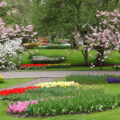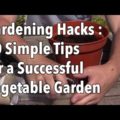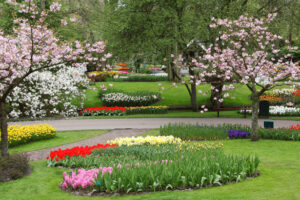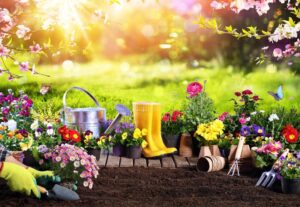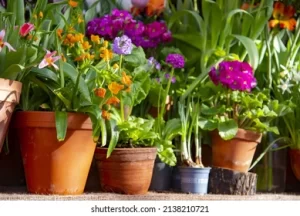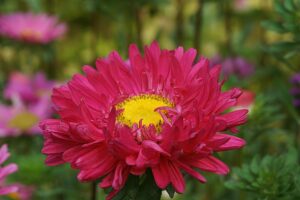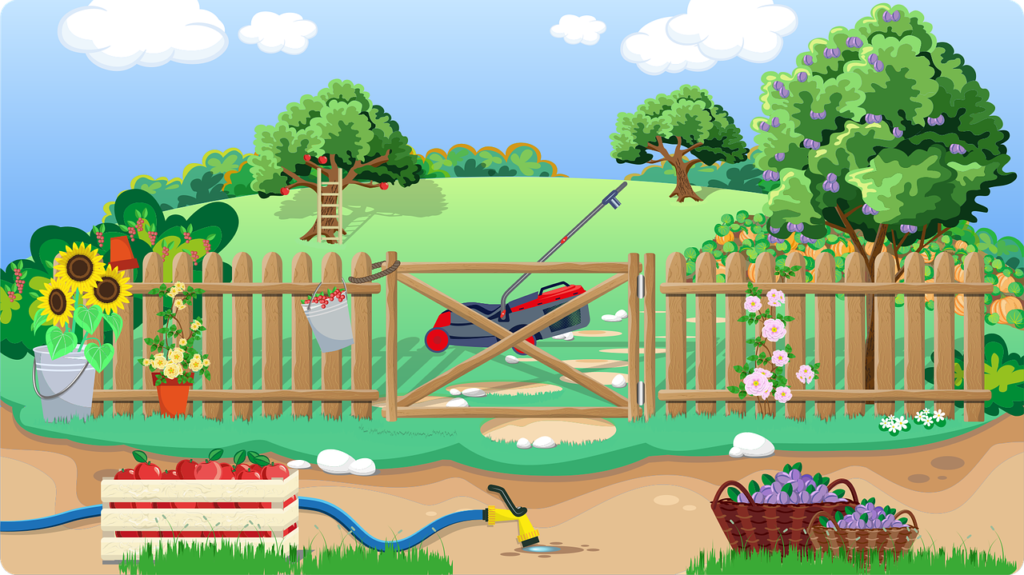
Gardening enthusiasts find great joy in witnessing the first signs of spring. The warming temperatures and clear, sunny days signal the exciting beginning of planting season. But what if you could maintain a beautiful, thriving garden throughout the entire year? Seasonal gardening allows you to do just that! With a little understanding and some planning, you can achieve gardening success in every season. In this guide, we’ll provide you with the essential information and tips to make the most of seasonal gardening.
Overview of Planting Seasons
To grow a magnificent garden year-round, you need to understand what makes each season unique. You’ll need to know how to work with seasonal conditions, not against them. Thinking ahead to seasonal transitions is also important, considering not only what plants are in season now but also which ones you can plant today for later blooms. Let’s have a look at the different planting seasons and what factors to consider as you build your seasonal garden.
Spring
- Early Spring: During early spring, the ground begins to warm up and becomes easier to dig in. This is the perfect time to plant perennials and watch their vibrant colors burst as summer nears. Bulbs planted in the fall or early winter start to come to life, making spring gardening refreshing and revitalizing.
- Mid-Spring: As the temperatures continue to rise, you can start planting cool-season vegetables like peas, spinach, and lettuce. Make sure to arrange your garden first before selecting plants. A great addition to your lawn during this time is herb and vegetable gardens. Plant your seeds in a small zigzag pattern instead of straight lines to encourage even absorption of water and sunlight.
- Late Spring: By late spring, the risk of frost has passed, and you can safely transplant your warm-season crops and perennials. This is also the time to fertilize new and existing plants, trees, and lawns. Keep an eye on weeds and tackle them as needed.
Summer
- Early Summer: With frost well behind you, annual flowering plants can now take hold in warmer ground conditions. Summer is arguably the season that gardeners wait all year for as showy summer flowers bloom. You can even plan for late summer flowers to keep the colorful array of plants going strong into the fall.
- Mid-Summer: As the weather gets hotter, it’s crucial to keep your plants well-watered. Water your plants a few times a day, especially after planting them into the dry soil. Weeding is also essential during hot days – you can do a little bit at a time or do a thorough weeding every week.
- Late Summer: August is a busy month for gardeners as annuals and perennials reach their peak, and the summer harvest begins. It’s also the perfect time to start planting cool-season crops like kale, spinach, Brussels sprouts, and cauliflower for a fall harvest. Ensure you fertilize and water your plants as needed, and monitor your garden for pests.
Fall
- Early Fall: Fall is a transition season that gives gardeners the opportunity to plan for early spring blooms. It’s also a season for planting trees and shrubs that will eventually head into a dormant stage. Seize on fall ground conditions before the soil becomes too hard or waterlogged.
- Mid-Fall: As the days become shorter and the weather gets colder, some plants may begin to die out even before the frost arrives. Check the weather online or in newspapers to determine when you might experience the first signs of frost in your area. When you know when the frost will arrive, you can harvest your remaining plants and cover any greens or vegetables with a floating row cover for warmth.
- Late Fall: This is the time to prepare your garden for winter. Avoid heavy mulches where you plan on planting early spring crops, as this can prevent the soil from warming up and delay planting time. Plant garlic, onions, and bulb flowers just before the ground freezes and insulate them with mulch or leaves.
Winter
- Early Winter: Winter gardening is more about maintenance and care than actual planting. Use this time to plan what you want to grow after the cold months. Start by expanding your seed starting soil pods, which will make it easier to get started if you plan on having plants inside your home.
- Mid-Winter: Apart from starting your indoor plants, you can use cold frames to start an early crop of greens that can later be moved outside. Winter is an excellent time to plant stems, leaves, and roots. The best plants for cold weather are broccoli, spinach, cabbage, carrots, and cauliflower.
- Late Winter: Use this period to rest and enjoy the preserved harvests from your garden. If you live in a temperate climate, continue growing cool-season crops. Start dreaming up your plans for the next year’s garden.
Benefits of Seasonal Gardening
There are numerous benefits to practicing seasonal gardening, including:
- Encourages Growth: Seasonal gardening promotes healthy growth of plants, as they are planted at the optimal times for their specific needs.
- Improves Your Nutrition: With seasonal gardening, you have unlimited access to fresh produce from your garden, allowing you to increase your intake of plant-based foods.
- Enhances Curb Appeal: A well-maintained garden can increase the value of your property and attract potential buyers.
- Provides Exercise: Gardening is a low-impact and leisurely-paced exercise routine that can increase your daily activity.
Things to Consider When Gardening
Before starting your seasonal gardening journey, consider the following factors:
- Where You Live: The environment and climate in your area will determine the plants best suited for your garden. Be sure to research your plant hardiness zone and choose plants accordingly.
- Pest Control: Consider using natural pesticides or organic pest control measures to protect your plants while minimizing harm to the environment.
Conclusion
Seasonal gardening is a rewarding practice that allows you to enjoy a beautiful and diverse garden throughout the entire year. By understanding the unique characteristics of each season and applying the tips and tricks shared in this guide, you can master the art of seasonal gardening and create a flourishing outdoor space to be proud of.


